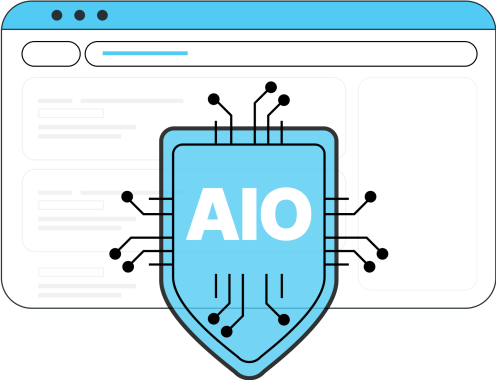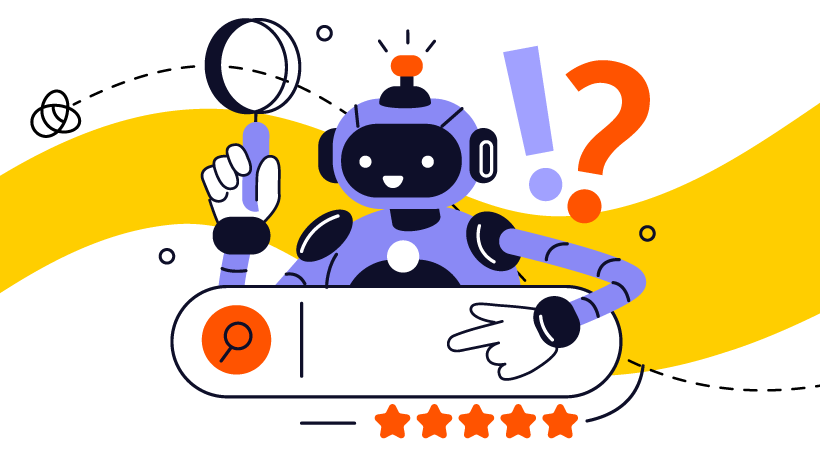AI Optimisation Is Reshaping Search in 2025
As tools like ChatGPT, Gemini, Perplexity and other AI models become more integrated into how people search, traditional SEO needs to evolve. Instead of just optimising for Google’s crawler, we now need to think about how AI reads, interprets, and summarises content.
This is where AI optimisation (AIO) comes in. AIO is an emerging SEO strategy that focuses on structuring content for visibility across AI-driven platforms. It’s about making your content more machine-readable, factually reliable, and contextually rich.
Whether you’re working with long-form blog content, service pages, or educational resources, optimising for AI tools is now essential for your 2025 SEO strategy.
What Is AI Optimisation in SEO?
AI optimisation is the process of formatting and structuring your content so that it performs well when processed by AI tools and generative engines. This includes technologies like:
- AI-powered search engines (Perplexity, Bing Chat, You.com)
- Generative overviews in Google Search
- Voice assistants (Google Assistant, Siri, Alexa)
- Summarisation tools integrated into browsers and productivity apps
Why Does AI Optimisation Matter for SEO?
In 2025, an increasing share of search interactions happen without users clicking through to websites. AI summarises answers, cites sources, and directs user journeys without needing a traditional results page.
Without AIO, your content may not be considered for:
Without AIO, your content may not be considered for:
- Google’s AI-generated overviews
- AI answers in tools like ChatGPT or Gemini
- Summarised content embedded in emails, chats, and productivity apps
- Voice search and smart assistants

Key Principles of AI Optimisation (AIO)
To ensure your content is AI-friendly, focus on these core practices:
-
Use Clear Structural Formatting
Break your content into digestible sections using:- Consistent use of H1, H2, and H3 headings
- Short paragraphs
- Bullet points or numbered steps where appropriate
- Tables for comparisons
-
Provide Concise and Accurate Information
AI models favour clarity. Avoid overly complex explanations and lengthy introductions. Instead, aim for short, direct sentences that answer key questions quickly.
For example:
A content audit is the process of reviewing and analysing your website’s content to identify strengths, weaknesses, and areas for improvement. -
Optimise for Natural Language Questions
Integrate question-based headings and answer them immediately. Tools like AnswerThePublic and AlsoAsked can help uncover how users phrase queries.
Example:
What is local SEO?
Local SEO refers to strategies that help businesses appear in search results for geographically relevant queries, such as “digital marketing agency in Auckland.” -
Use Semantic Keywords and Entities
AI models rely on context, not just keywords. Include:- Related terminology (e.g. “semantic search”, “machine learning”, “LLMs”)
- Named entities like tools, organisations, or locations
- Internal links to reinforce topic depth
-
Apply Structured Data Markup
Use schema.org markup for FAQs, articles, and how-to content. Structured data provides AI models and search engines with machine-readable information about your content’s structure and purpose.
This improves your chances of being featured in rich snippets, Google’s AI overviews, or as a source in generative engines.
What Does AIO Look Like in Practice?
Let’s say you’re writing a blog post about how Google SGE affects small businesses. Instead of long paragraphs with unclear structure, you’d:
- Begin with a summary definition in plain language
- Break down implications by business type (e.g. local retailers, service providers)
- Include an FAQ section with real user questions
- Link to relevant tools or service pages like RD Digital’s marketing services
Getting Started with AIO: Tips for Businesses
Here are some practical steps to optimise your content for AI and search:
- Audit your existing content to check for formatting and clarity
- Add FAQ sections to key service pages
- Identify which of your blog posts could be updated with semantic structure
- Monitor how your content performs in AI summaries and SERP features
Final Word: AIO Is a Key Part of Future-Proof SEO
AI optimisation isn’t a replacement for traditional SEO — it’s an evolution of it. As search becomes more conversational, AI-driven, and summarised, your content needs to meet users wherever and however they search.
At RD Digital, we help clients implement forward-thinking SEO strategies that work not just for today, but for what’s coming next. If you’re ready to explore AI-driven SEO, we’re here to help.
Explore our full range of SEO services to learn how we can support your visibility in the age of AI.
